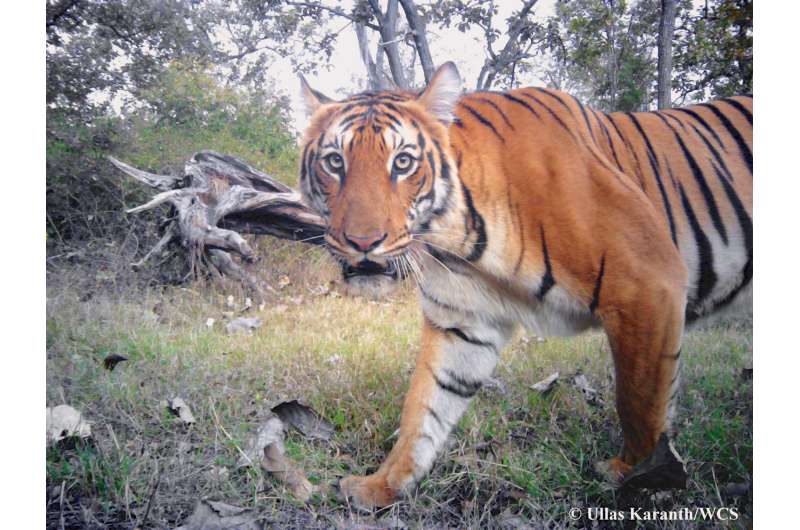A tiger photographed by camera-trap. Credit: Ullas Karanth/WCS
Spatial capture-recapture model analysis is often used to estimate tiger abundance. A new study led by Dr. Robert Dorazio of the United States Geological Survey, and co-authored by WCS's Dr.Ullas Karanth, however, finds that dates and times of animal detections are often not factored into the analysis. This is despite the fact that this data is available when using "continuous-time" recorders such as camera-traps.
Dr. Robert Dorazio said, "Modeling capture times of tigers and other large carnivores uses all of the information in the data and gives us a chance to learn more about the behaviors and movements of these animals—information that is crucial to their conservation."
A short video features Dr. Karanth discussing how this study might change that thinking and benefit scientists. Says Karanth: "We are now able to exactly incorporate the time of capture into the data analysis. This gives us more power to mimic nature in the sense of how tigers actually get 'trapped' in cameras, and how their movement, behavior, and space-use relate to time. This is a significant advance."
Because 70 percent of wild tigers are concentrated in less than 6 percent of remaining habitats, it is critical to efficiently manage these areas for tiger use.
More information: DOI: 10.1371/journal.pone.0176966
Provided by Wildlife Conservation Society





















